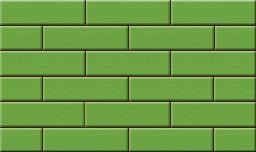Turf Installation & Maintenance
Installing a fresh carpet of turf for your project is simple and requires a few basic principles, which we’ve outlined below. For further assistance or in-depth technical questions, please contact us.
- Measuring
First, make sure to accurately measure the site. We recommend using our sod calculator tool. Remember, you may need to order extra sod to account for trimmings and other tricky areas.
Dimensions and specifications of our sod rolls are the following:
- Our sod rolls come in 2-foot by 5-foot pieces to give you 10-square feet per roll.
- Each roll weighs 30 to 50 pounds, depending on root moisture.
- The maximum amount of a pallet of our sod is 540 square feet, ot 540 rolls of sod.
- Soil and Site Preparation
- We recommend that all weeds be eradicated before installing, to ensure they do not compete with the sod in the future.
- Loosen the soil by tilling it with a spade shovel or a roto-tiller. This allows for the grassroots to establish more easily. We recommend to till at a depth of 3 to 6 inches.
- Remove any sticks, clumps of dirt and debris greater than 2 inches with a rake or shovel. You may need topsoil to fill in any low holes or swales for a smooth surface.
- You can apply a turf starter fertilizer by following recommendations on the bag label. Be sure to avoid and to sweep up any fertilizer that falls on an impervious surface. For an update on current fertilizer applying laws, visit Maryland’s website.
- Just before installing the sod, we recommend to lightly moisten the soil. Be sure to not overwater it, because that could make loose dirt, nutrients and water runoff.
- Installing Turf
- Sod is a living plant that needs to breathe. The less time it stays rolled up, the healthier it is for the plant. That is why it is important to install your rolls of sod immediately upon delivery.
- It is best to start unrolling your sod in the area where you will not be walking back over it. Think of it like mopping a floor or staining your deck.
- Pick the edge of the yard site that is the most perpendicular and has the longest side if possible. Examples would be along the driveway and sidewalk of your house. On slopes, place the rolls so they are running across and not down it. This will reduce water run-off and potential washouts.
- After you have picked your first straight pass, begin to unroll, butt and push the edges and ends against each other. After your first row is completed, you will want to stagger your next row in a brick-layer pattern. See to figure below. Outside edges that do not butt up to anything should have a little soil raked against it to keep from drying out.
- We recommend to roll the entire area with a turf roller after installation. This will remove air pockets and improve the sod to soil contact.

- Watering
- Begin watering immediately, at least 30 minutes after installation. You want to give your lawn about 1 inch of water in the first 30 minutes of installation. This can be monitored by placing a rain gauge where you are watering. This generally takes a half hour to an hour. It is difficult to overwater but if ponding occurs or your foot sinks in, you should reduce the amount applied.
- Water daily for the first two weeks anywhere from 0.5 inch to 1.5 inches. Again, you can monitor the amount by using a rain gauge. Depending on the time of year and the amount of rain during that particular season, more or less water will need to be applied. Summer months will require the most attention to heat stress and will require daily watering. This is particularly important, because the bottom of the sod and soil needs to stay moist. If you see any browning during the warm growing seasons, start watering daily.
- Maintenance
- This is key: the turf we grow is a tall-type fescue and the recommendations listed reflect the views derived from the research conducted by the University Of Maryland for this mid-Atlantic region.
- We recommend to never remove more than one-third of the leaf surface at one time when mowing.
- During the spring to summer months, it is recommended to maintain the grass height 3 to 4 inches for tall-type fescue.
- During the autumn to winter months it is recommended to maintain the grass 2.5 to 3 inches for tall-type fescue.
- If applying fertilizer, be sure to follow labeling instructions closely or consult with a Maryland state certified applicator.
- If self-applying fertilizer, refer to this link to stay updated on current homeowner applicator laws in Maryland.
- When watering, it is recommended to do so early in the morning or in the evening.
For more in-depth information you can refer to a link on the University of Maryland’s website.
